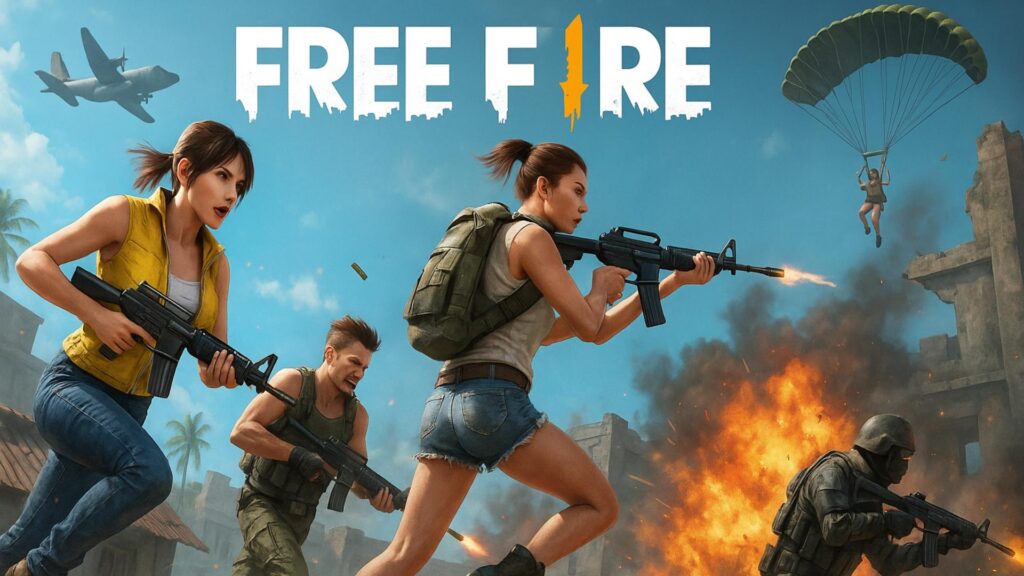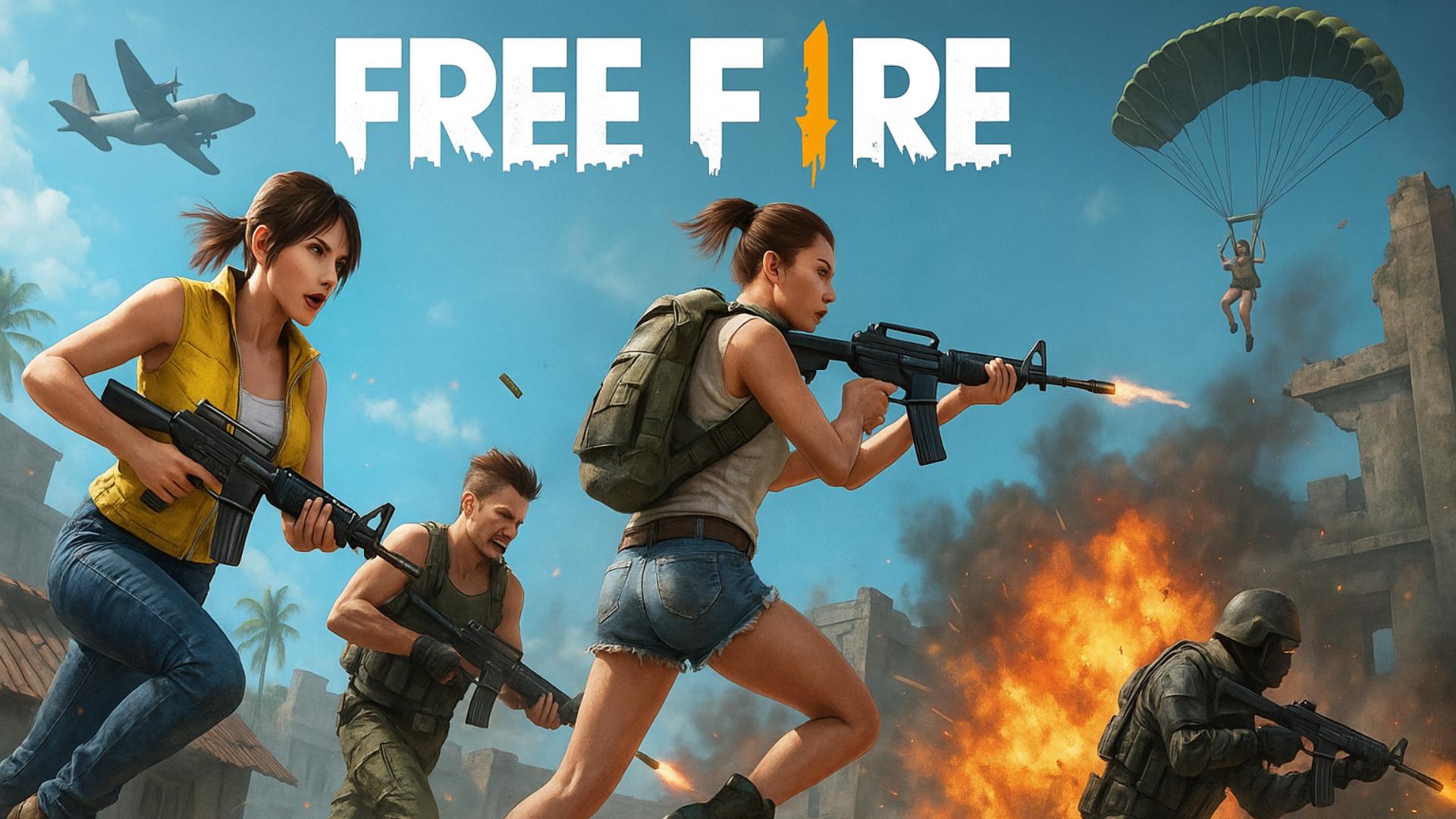Explore the benefits and challenges of the game, plus top tips to stand out and climb the ranks
Complete Free Fire Guide: Discover the best strategies to get codes and diamonds
Want more diamonds in Free Fire? Discover how to combine official codes, a smartly used Battle Pass, and the game modes you play best to level up faster and get rewards without wasting resources. Don’t miss out — check it out now!
4 reasons to start playing Free Fire today:
You will remain in the same website
In under 10 minutes, you'll find:
- Simple language focused on productivity, gameplay, and useful Free Fire tips.
- Practical routines to progress without wasting time.
- Match-deciding fundamentals: positioning, timing, and communication.
- Healthy habits for focused and safe gameplay.
- Complementary content to code and diamond guides — here the focus is on performance and routine.
Why Gaming is Good (When Done in Balance)
1) Accelerated learning and problem-solving
Games teach decision-making under pressure, step-by-step planning, and how to adapt strategies when things don’t go as expected. This fast cycle of trial and error improves logic, planning, and creativity.
2) Motor coordination and visual attention
Precise movements, fine control, and reading the game environment enhance hand–eye coordination and selective attention — skills that transfer to studying and work.
3) English and new languages
Interfaces, tutorials, and communities often use English. Just a little gameplay each day helps build vocabulary and improve reading and listening skills without you even noticing.
4) Teamwork and communication
Team matches require role coordination, task division, clear callouts, and conflict resolution. Over time, this develops empathy, leadership, and negotiation skills.
5) Resilience and frustration management
Losing is part of the game. Learning to take losses, review decisions, and try again builds frustration tolerance and internal motivation — useful in any project.
6) Creativity and self-expression
Skins, map building, custom modes, and content creation (clips, fanart, guides) let you explore styles and tell stories. Games can also inspire careers in art, design, programming, or marketing.
7) Routine and discipline
Simple session goals (e.g., complete daily challenges) promote consistency. People who learn to organize their gameplay often apply that structure to studying and working.
Challenges Worth Attention (And How to Deal With Them)
1) Time and balance
Risk: “Just one more match” turning into an all-nighter.
Fix: Set play windows (60–90 minutes) with alarms and a clear stopping rule: if you lose two in a row and get tilted, stop and come back later.
2) Sleep and physical health
Risk: Screens at night, bad posture, and few breaks.
Fix: Power down screens 60–90 minutes before bed, adjust chair/screen height, stretch wrists and shoulders every 45–60 minutes.
3) Anxiety, tilt, and toxicity
Risk: Falling into rage cycles, trash talk, and poor performance.
Fix: Short breaks, 4-4-4-4 breathing, process-focused goals (like better communication), mute toxic chat, and use the report system.
4) Digital safety and privacy
Risk: Scams, phishing, fake “generators”, account loss.
Fix: Enable 2FA, use unique passwords, buy only from official stores, avoid suspicious links, and never share verification codes.
5) Impulsive spending
Risk: Buying on impulse and regretting it.
Fix: Set a monthly budget, keep a 1–2 item wishlist, wait for discounts, and ask “Will I really use this?” If not, delay the purchase.
6) Inappropriate content and age limits
Risk: Exposure to themes not suited for your age.
Fix: Check age ratings, use parental controls, and stick to official communities.
7) Hardware and connectivity
Risk: Lags, overheating, and high ping ruining the experience.
Fix: Optimize graphics, clear memory, use stable Wi-Fi (or wired connection), close background apps, and play during off-peak hours.
Game Productivity: Do More in Less Time
Focus blocks (60–90 minutes)
Play in short windows with one goal per session (e.g., improve positioning, practice mid-range sprays). At the end, write down one takeaway in two lines. It builds long-term memory and prevents tilt.
2-loss rule → take a break
Lost two in a row? Pause for 5–10 minutes. This “loop breaker” helps you avoid snowball tilt, improves decision-making, and keeps your accuracy stable.
Pre-match check-in (45 seconds)
- Sensitivity and HUD checked
- Brightness/contrast adjusted to current map
- Phone notifications silenced
- Session goal whispered aloud (yes, it helps you focus)
Daily micro-training ideas
- 3 drops just to practice safe rotations (no early fights)
- 5 duels focused on strafing + prefire
- 10 minutes of reading the minimap and directional audio (good headphones help a lot)
Gameplay: Fundamentals That Win Matches
Positioning > perfect aim
Good aim helps, but positioning wins fights without you forcing bad trades. High ground and side cover win fights even with lower damage.
Use terrain and walls to “break enemy vision” and split 1v2 into two 1v1s.
Distance control
Know your comfort zone: short, mid, or long range. Build your loadout for your range and avoid fights outside of it. If an opponent forces close range and you're built for mid, pull back, reposition, and reload.
Fight timing
Three timings win games:
- Early safe zone (clean rotations)
- Mid-game shift (gather info and surprise angles)
- Endgame (save grenades/resources for the final circle)
Train to stop chasing pointless kills between zones 1 and 2 — rotation is worth more points.
Lean communication (for squads)
“2 left with me / 1 down / pushing now.”
Avoid long narrations. Precise callouts + good timing = ranked teamplay.
Settings That Build Consistency
Sensitivity tailored to you
- Hipfire: make it feel natural for quick transitions.
- ADS: adjust until your spray stays stable at mid-screen distance.
- If your aim overshoots, slightly lower it.
Clean HUD
Essential buttons within thumb reach and no info clutter. Less clutter = faster decisions.
Graphics and performance
Stable FPS > pretty visuals. If your device heats up, turn down shadows/effects and avoid charging while playing.
Drop and Rotation Routes: Avoid Early Chaos
Smart drops
Land where there’s enough loot for your team + an escape route.
Prefer “second call” zones: near the main route but with less competition.
Backup rotations
Always have a route A and a route B.
Avoid crossing open valleys without smokes/cover. Use edges, walls, and solid cover.
Resource Economy: Win Matches “On Paper”
Inventory by role
- Entry: utilities, medkits, extra ammo
- Anchor: long-range vision and flank control
- Support: kits, grenades, and info tools
Overlooting hurts the team: carry only what you need and leave space for tactical items.
Risk windows
Don’t fight right after using consumables or before the zone closes. That’s peak punishment time for bad positioning.
14-Day Mini Routine for Improvement
- Days 1–3: 20 min/day of spray control + 2 matches focused on positioning
- Days 4–6: train drop routes; test 2 fixed and 1 backup spot
- Days 7–9: practice rotation timing (leave early, get angles)
- Days 10–12: refine short calls with your duo/squad
- Days 13–14: review clips and note 3 tweaks for next week
Free Fire Trivia That Turns Into Competitive Advantage
Silence = pressure
Many teams panic after 15–30 seconds without info and make mistakes. Stop giving away your position — use silence as a weapon.
The power of “reset”
After a tough fight, reset: reload, heal, reposition, and wait for the enemy’s mistake. Whoever resets best usually wins the clutch.
Final-circle effect
Players use their utilities too early. Saving a grenade/smoke for the last circle can decide what seems like a 50/50 match.
Map rhythm
Each map favors a different playstyle: some are rush-heavy, others reward patience and terrain reading. Use separate presets per map (light sensitivity, clean HUD, item loadout).
For Squads: Clear Roles Save Time
- Entry: opens space and forces enemy utilities
- Trader: instant trade so the entry isn’t left alone
- Anchor: watches back/flank and controls long vision
- IGL: calls rotations and timings; short, firm, clear calls
Rotate roles in practice to understand the pressure of each one.
Financial Planning: Play Hard Without Overspending
- Set a monthly spending limit and use a 24-hour cooldown rule for big buys
- Value by usage: if the item isn’t in your routine, skip it
- Prioritize experiences that improve gameplay (like a pass that encourages challenges) over impulse buys
Digital Safety That Saves You Trouble
- 2FA enabled and verified email
- No “generators” or unofficial links
- Unique, private passwords
Keep updates current to prevent crashes and bugs
Usually not. They tend to unlock cosmetics or specific rewards. Diamonds are gained through top-ups, gift cards, or official bonuses.
Not always. Many codes are region-locked. If your server is different, redemption might fail.
Very short. Sometimes minutes or hours. Redeem them as soon as you see them.
It could be expired, used up, from another region, or mistyped. Double-check and try again.
Conclusion
Productivity in Free Fire isn’t about playing more — it’s about playing smarter: clear goals, short focused sessions, smart breaks, and learning from each match.
Solid gameplay is built on positioning, distance control, and timing. And knowing the right tricks — like using silence, resetting after trades, and saving utilities for the last circle — turns small insights into real advantages.
Bring these three habits to your next session:
- One clear goal per session and a 2-line takeaway at the end
- 2-loss rule → take a break to protect your mindset
- Map-specific presets (light sensitivity, clean HUD, matching loadout)
With consistency, you’ll cut repeated mistakes, save time, and turn every match into a real step toward your peak level.


